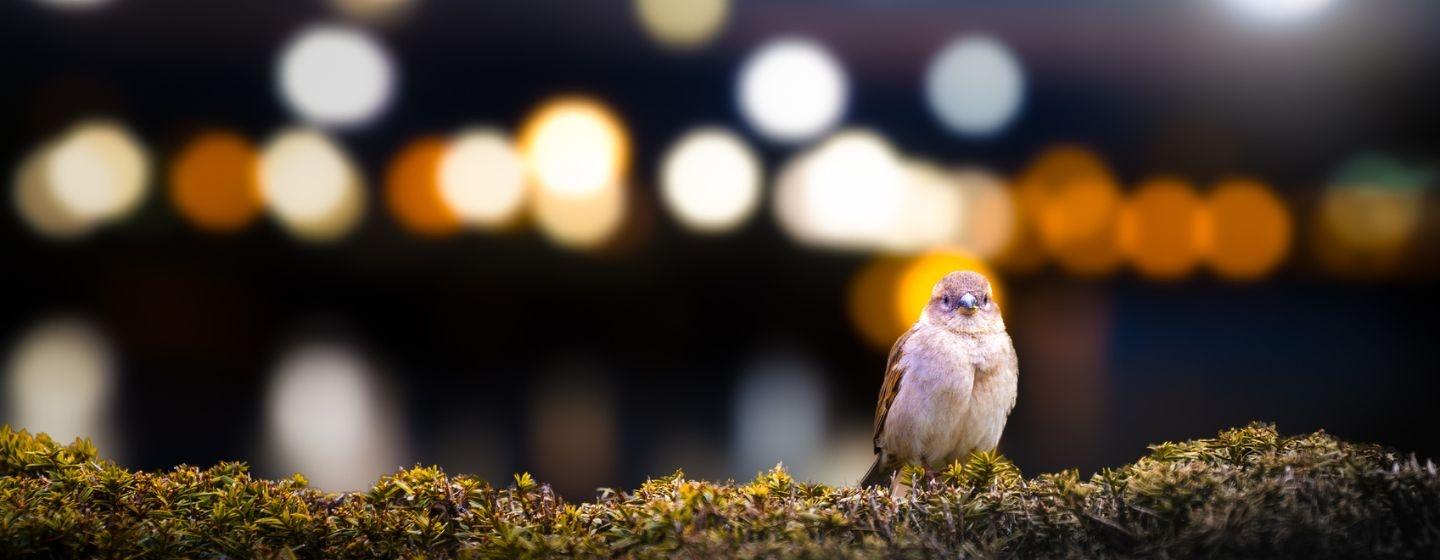How Light Pollution Affects Backyard Birds


It might be hard to imagine, but before the middle of the 1800s, most people lived under night skies lit entirely by the moon. When day turned to night, people went indoors and continued their day by the glow of fireplaces and candles.
But by the early 20th century, electric outdoor lighting was becoming more common. And, as you can imagine, its popularity spread quickly, increasing by 3% to 6% per year.
Just how popular became clear in 2016, when the first comprehensive global satellite measurement of nocturnal artificial light was published in the journal Science Advances. Called “The New World Atlas of Artificial Night Sky Brightness,” the study found that 80% of the world’s population lives under light-polluted skies, defined as places where the glow from artificial lights is significant enough that the stars disappear from view.
In the United States and Europe, 99% of residents live under light-polluted skies.
You can debate whether it’s bad for humans not to see the stars, but the evidence is clear: light pollution is bad for animals, disorienting and exposing them to dangers such as predators, exhaustion and starvation. Artificial light can also act like a fence, contributing to habitat loss and fragmentation. Sea turtle hatchlings, migratory birds, insects and bats have all been shown to become disoriented by light pollution.
A study from NC State researchers adds two backyard bird species to the list of creatures harmed by light pollution.
Researchers looked at 20 years of data from a citizen-science study called Neighborhood Nestwatch, run by the Smithsonian Migratory Bird Center from 2000 to 2020. In the study, biologists used nets to catch birds at 242 sites, mostly in the backyards of homes in urban and rural areas around Washington, D.C. They tagged the birds with easily identifiable colored bands. Volunteers then looked for the color-banded birds throughout the year.
The study focused on seven common species of songbirds: American robin, Carolina chickadee, Carolina wren, gray catbird, house wren, song sparrow and North Carolina’s state bird, the northern cardinal.
The NC State team combined data from the citizen-science study with maps of light pollution and found lower survival rates for the gray catbird and house wren with more light pollution at night. Researchers say that could be due to collisions, because while the birds primarily live year-round in the Washington, D.C., area, some migrate to states farther south.
Ironically, researchers found survival for the American robin increased with artificial light, which may be caused by robins using light to forage for food. The findings point to factors that could be important to understanding whether backyard birds will thrive around cities and urban areas. More research is needed.
“We focused on more generalist bird species that are more abundant in metropolitan areas than others,” said Lauren Pharr, a graduate student in NC State’s Fisheries, Wildlife and Conservation Biology program and a lead author in the study. “What we found raises our awareness about our use of light and suggests there may be things we can do to help backyard birds survive.”
“This an important finding because it adds to our understanding that light pollution could have sub-lethal effects on birds,” said Caren Cooper, a professor of public science at NC State. “There is an effort in bird conservation to keep common birds common. We’re lucky to have backyard birds, and we want to keep it that way. If there are things we can understand about the environment that could affect their survival, the sooner we understand that the better.”